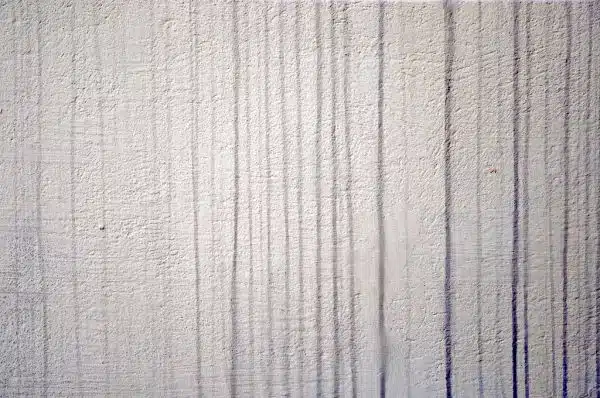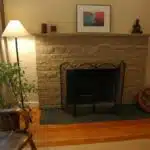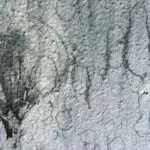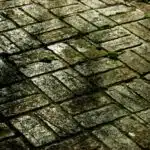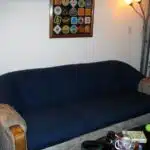As a professional cleaning expert, I have seen many homeowners struggle with keeping their white walls clean and pristine. While white walls can brighten up any space and give it a timeless appeal, they are also prone to dirt, stains, and discoloration. In this article, I will share some tips on how to effectively clean white walls without damaging the paint or leaving unsightly streaks.
Firstly, it is important to understand that different types of wall surfaces require different cleaning methods. While some walls can be scrubbed vigorously with soap and water, others may need a gentler approach to avoid damage. Secondly, it is crucial to choose the right cleaning products for your walls. Using harsh chemicals or abrasive sponges can cause irreparable damage to the paint and leave behind unsightly marks. Therefore, knowing which cleaning agents are safe for your specific wall type is essential in maintaining its pristine appearance. In the following paragraphs, I will provide more detailed instructions on how to clean different types of white walls and keep them looking fresh and new for years to come.
Understanding Different Types Of Wall Surfaces
As a professional cleaning expert, it is essential to understand the different types of wall surfaces in order to effectively clean them. When it comes to white walls, it is important to choose appropriate cleaners that will not damage the surface. White walls come in many different materials such as plaster, drywall, and brick, each requiring specific cleaning techniques and products.
Maintaining wall surfaces is crucial for preserving their longevity and appearance. Regular dusting and wiping down with a damp cloth can prevent buildup of dirt and grime. However, when it comes to deep cleaning or removing stubborn stains, it is important to use the correct technique depending on the material of the wall. This ensures that no damage is done during the cleaning process.
Identifying your wall type is crucial before beginning any cleaning process. Once you have determined whether the surface is painted drywall, plaster or textured wallpaper, you can select an appropriate cleaner. It’s important to read labels carefully and follow instructions precisely in order to avoid damaging your walls. With this understanding, you can move onto selecting an appropriate cleaner for your specific wall type.
Identifying Your Wall Type
- The types of walls present in a home can vary greatly and can include painted walls, wallpapered walls, and even textured walls.
- In order to properly clean walls, it is important to first identify the type of wall being cleaned and to prepare it in the proper manner.
- Painted walls are generally the easiest to clean and can be prepped by wiping away any dust or dirt with a damp cloth.
- Wallpaper may require more work due to its delicate nature and should be tested for colorfastness before using any cleaning products.
- Textured walls may require special brushes or cleaning tools in order to effectively remove dirt and debris.
- Once the walls have been properly prepped, the right cleaning products should be chosen depending on the type of wall being cleaned.
Types Of Walls
When it comes to cleaning white walls, identifying your wall type is crucial. Different walls require different cleaning methods to avoid damaging the surface. There are three main types of walls: painted, wallpapered, and plastered. Knowing which type you have will help you determine the best way to clean it.
Painted walls are the most common type of wall in homes. They are easy to clean and maintain with regular dusting and occasional washing with a mild detergent and warm water. However, be careful not to scrub too hard or use abrasive cleaners as they may damage the paint finish. Painting tips suggest using a microfiber cloth or sponge for gentle cleaning. DIY wall decor enthusiasts can also experiment with different colors and finishes to add personality to their space.
Wallpapered walls require more delicate care when cleaning. Avoid using water or chemical cleaners as they can cause the paper to peel or wrinkle. Instead, use a soft-bristled brush or vacuum with a soft brush attachment to remove dust and dirt from the surface. If there are stains on the wallpaper, try using a pencil eraser or art gum eraser gently on the spot. For stubborn stains, consult with a professional cleaner who specializes in wallpaper cleaning techniques.
Plastered walls are typically found in older homes and require extra care when cleaning due to their porous nature. Dusting regularly will help prevent dirt buildup, but if you need to clean them beyond that, use a soft-bristled brush or vacuum with a soft brush attachment first before wiping them down with a damp cloth. Be careful not to oversaturate the plaster with water as it can cause damage over time. With these tips in mind, you can keep your white walls looking fresh and new for years to come!
Preparing The Walls
Identifying your wall type is crucial when it comes to cleaning white walls. Understanding the composition of your wall surface will help determine the appropriate cleaning method and products that should be used. However, before any cleaning process can begin, it is essential to prepare the walls accordingly.
Wall surface preparation is an essential step in maintaining your white walls’ cleanliness and appearance. Before applying any cleaning solution, remove all items from the walls such as pictures or decorations. This step will ensure that all areas of the wall are accessible for cleaning. Additionally, inspect the walls for any damages or holes that may need repairs before proceeding with the cleaning process.
Once you have prepared the wall surface, it is time to prepare the cleaning solution. The cleaning solution’s concentration depends on the type of dirt or stain on your white walls. For mild stains, a simple mixture of warm water and dish soap can do the trick. However, for more stubborn stains or marks left behind by crayons or markers, a stronger solution may be necessary. Mixing baking soda with warm water creates a paste that can clean tough stains without damaging your wall’s paint finish. With proper preparation of both your wall surface and cleaning solution, you can keep your white walls looking spotless and fresh.
Cleaning Products
When it comes to cleaning white walls, identifying your wall type is not the only crucial factor. You also need to choose the right cleaning products that will effectively remove dirt and stains without damaging your wall’s paint finish. Some cleaning products can be harsh and abrasive, which can cause discoloration or even strip off the paint. As a professional cleaning expert, I highly recommend using eco-friendly options or DIY alternatives as they are safer for both your family and the environment.
Eco-friendly options such as vinegar and baking soda are excellent alternatives to commercial cleaning products. Vinegar is a natural acid that helps break down stubborn stains while disinfecting the surface. When mixed with warm water, vinegar can be used to clean greasy fingerprints or mildew growth on painted walls. Baking soda, on the other hand, acts as a gentle abrasive that removes dirt and grime without scratching the paint finish. When mixed with warm water, baking soda creates a paste that can clean tough stains left by crayons or markers.
Another option for eco-friendly cleaning is using DIY alternatives that you can easily make at home. For instance, mixing lemon juice with warm water creates a fragrant solution that effectively removes dirt and grime from painted surfaces. Another alternative is making a mixture of borax and warm water; this solution can remove tough stains while sanitizing your walls at the same time. With these DIY alternatives and eco-friendly options readily available, you can keep your white walls looking spotless without harming your health or the environment.
Gathering The Right Cleaning Supplies
To properly clean white walls, it is essential to gather the right cleaning supplies. Before starting, make sure you have a bucket, sponge or cloth, vacuum cleaner with an attachment for dusting, and a step ladder if needed. It is also important to use cleaning products that are safe for your walls.
When selecting cleaning products, avoid using harsh chemicals or abrasive scrubbers as they can damage the paint and leave marks on your walls. Instead, opt for gentle cleaners such as mild soap or vinegar diluted in water. Additionally, consider using microfiber cloths or sponges that are effective at removing dirt without leaving streaks.
Before beginning any cleaning technique on your white walls, always take safety precautions. Make sure to wear gloves and protective eyewear if necessary and avoid standing on unstable surfaces while cleaning high areas. By following these safety measures and using the right tools and cleaning agents, you can achieve a spotless finish without damaging your walls.
Transition: Now that you have gathered all the necessary supplies and taken necessary safety precautions, it’s time to prepare the cleaning solution before starting the cleaning process.
Preparing The Cleaning Solution
While it may seem daunting to clean white walls, proper preparation and the right cleaning supplies can make the process much easier. However, before jumping into preparing the cleaning solution, it’s important to address a common concern: will the cleaning solution damage the paint on the walls? Rest assured, as long as you follow proper mixing ratios and safety precautions, your walls should be safe from harm.
When preparing the cleaning solution for white walls, it’s important to use distilled water rather than tap water. Tap water can contain minerals that can leave streaks or stains on your walls. Additionally, use gentle and colorless dish soap or a mild detergent in conjunction with the distilled water. A good mixing ratio is one cup of distilled water to one teaspoon of dish soap or mild detergent.
Safety precautions should also be taken when mixing your cleaning solution. Be sure to wear gloves to protect your skin from any potential irritants in the cleaning solution. Additionally, work in a well-ventilated area to avoid inhaling any fumes from the cleaning solution.
Protecting furniture and floors during the cleaning process is just as important as protecting your skin and walls. In order to prevent damage or staining on furniture or floors, cover them with drop cloths or old sheets before beginning the cleaning process. Once everything is properly protected and prepared, it’s time to move onto actually cleaning those white walls!
Protecting Furniture And Floors
Protective coverings are a great way to protect furniture and floors from damage. Furniture should be covered with a soft fabric, such as cotton or velvet, to prevent scratches and other damage from occurring. Floor mats should be used at entrances to prevent dirt and debris from entering the room and damaging the floor. Different types of floor mats can be used to suit different needs, such as mats with a rubber backing to prevent slipping.
Protective Coverings
If you’re looking for an effective way to protect your furniture and floors during cleaning, you might want to try using protective coverings. One of the most popular options is a protective film, which is a temporary layer of plastic that can be applied directly onto surfaces. This type of covering is typically used on carpets, hardwood floors, and even furniture to prevent any type of damage or staining from cleaning chemicals.
Another option for protecting your furniture and floors during cleaning is adhesive tape. This type of tape can be used to create a barrier around sensitive areas, such as the edges of furniture or baseboards. It’s also useful for securing drop cloths or plastic sheeting in place when doing larger-scale cleaning projects.
Keep in mind that protective coverings are not only useful for preventing damage during cleaning but can also save time by reducing the need for extensive cleanup afterward. By taking a few extra steps to protect your furniture and floors before beginning your cleaning routine, you can ensure that these surfaces stay looking their best for years to come. So next time you’re planning a deep clean of your home, consider investing in some protective coverings like adhesive tape or protective films!
Floor Mats
When it comes to protecting your furniture and floors during cleaning, using appropriate coverings is crucial. While adhesive tape and protective films are useful options, floor mats can also be a great investment for preventing dirt, debris, and moisture from damaging your floors. Choosing durable mats that can withstand heavy foot traffic and frequent cleaning is important in ensuring long-lasting protection.
Proper placement of floor mats is equally important. Placing them at entryways and high-traffic areas can effectively trap dirt and moisture before they reach the rest of your flooring. Additionally, regular maintenance such as vacuuming or shaking out the mats can help prolong their lifespan and effectiveness. Mats should also be replaced when worn out or damaged to continue providing adequate protection.
Incorporating floor mats into your cleaning routine not only protects your floors but also adds an extra layer of safety by reducing slip and fall hazards. By investing in appropriate, durable mats and properly placing and maintaining them throughout your home, you can ensure that your floors stay looking their best for years to come while keeping everyone safe from accidents.
Cleaning Eggshell And Satin Painted Walls
Eggshell and satin painted walls are a bit trickier to clean than matte painted walls. The best way to clean these walls is by using a vinegar solution. Vinegar is a great cleaning agent that can effectively remove dirt and grime from your walls without damaging the paint finish. To make the solution, mix equal parts of white vinegar and water in a spray bottle.
To clean eggshell or satin painted walls, start by dusting off any loose dirt or cobwebs using a soft-bristled brush. Then, spray the vinegar solution onto a microfiber cloth or sponge, and gently wipe the wall in circular motions. Be careful not to scrub too hard as this can damage the paint finish and leave streaks. It’s also important to work in small sections to prevent the solution from drying on the wall.
Preventing streaks is crucial when cleaning eggshell or satin painted walls. To do this, avoid using too much pressure when wiping the wall with the solution. Also, make sure to rinse your cloth or sponge frequently with clean water to remove any dirt or residue that could cause streaks. Once you’ve finished cleaning, allow the wall to air dry completely before touching it again.
Next up is cleaning semi-gloss and gloss painted walls. These types of paint finishes require extra care when cleaning as they tend to show every little mark or smudge. But don’t worry, we’ve got you covered!
Cleaning Semi-Gloss And Gloss Painted Walls
While cleaning eggshell and satin painted walls may seem like a daunting task, cleaning semi-gloss and gloss painted walls can present its own set of challenges. One of the most common concerns when cleaning these types of walls is preventing streaks from forming. However, with the right technique and tools, you can achieve a spotless finish on your semi-gloss or gloss painted walls.
Choosing cleaning products that are specifically designed for high-gloss surfaces is crucial in achieving a clean finish without leaving behind any residue or streaks. Avoid using harsh chemicals or abrasive materials that can damage the paint’s surface. Instead, opt for gentle cleaners and microfiber cloths to gently remove dirt and grime without scratching the surface.
Preventing streaks requires careful attention to detail during the cleaning process. Start by dusting the wall with a soft-bristle brush or vacuum cleaner attachment to remove any loose debris. Then, dampen a microfiber cloth with your chosen cleaner and wipe the wall in small sections, working from top to bottom. Be sure to rinse your cloth frequently to avoid spreading dirt around, and use a dry cloth to buff the wall once it’s clean.
When it comes to cleaning semi-gloss and gloss painted walls, choosing the right products and technique is key to achieving a flawless finish. By following these tips for selecting gentle cleaners and avoiding streaks during the cleaning process, you can keep your high-gloss walls looking their best for years to come. In the next section, we’ll discuss how to clean matte painted walls without damaging their delicate finish.
Cleaning Matte Painted Walls
When it comes to cleaning matte painted walls, it is essential to choose the right cleaning tools. Abrasive sponges or harsh chemicals can easily damage the paint and leave unsightly marks on your walls. Instead, opt for a microfiber cloth or a soft-bristled brush to gently scrub away dirt and grime.
Preventing paint damage is crucial in maintaining the quality of your matte paint finish. Avoid using too much water when cleaning as excessive moisture can seep into the pores of the paint and cause it to flake or peel off. Additionally, be mindful of any scuff marks or stains that require more aggressive cleaning methods, such as spot cleaning with a diluted mixture of vinegar and water.
In summary, cleaning matte painted walls requires careful attention to detail and gentle handling. By choosing the right cleaning tools and techniques, you can effectively remove dirt while preventing any harm to your paint job. However, if your walls are textured, there are additional considerations you need to keep in mind in order to ensure that they remain looking their best.
Transitioning into the subsequent section on “cleaning textured walls,” let’s explore some tips for keeping these unique surfaces clean and well-maintained.
Cleaning Textured Walls
While smooth walls are easy to clean, textured walls pose a challenge. The bumps and ridges in the texture trap dirt, making it difficult to remove with just soap and water. However, cleaning textured walls is not impossible. With the right technique tips and tools, you can have your walls looking clean and refreshed in no time.
Technique tips:
- Start by dusting the wall using a soft-bristled brush or vacuum cleaner attachment
- Use a damp sponge or cloth to gently scrub the wall, taking care not to damage the texture
- For tougher stains, mix a solution of warm water and mild detergent and apply it sparingly with a cloth or sponge
- Rinse the wall with clean water and dry it thoroughly using a towel or fan
Tools needed:
- Soft-bristled brush or vacuum cleaner attachment
- Damp sponge or cloth
- Mild detergent
- Towel or fan for drying
Cleaning textured walls may require more effort than cleaning smooth ones, but it is worth it for the beautiful finish they provide. Once you have mastered this technique, maintaining your textured walls will be much easier.
Transition: Now that you have learned how to clean textured walls, let’s move on to another surface that requires special attention: wallpaper.
Cleaning Wallpaper
After successfully cleaning textured walls, it’s time to move on to the next task: cleaning wallpaper. This can be a bit more challenging than cleaning regular walls because you need to avoid damaging the wallpaper while still getting it clean. The first step is to identify what type of wallpaper you have, as different materials require different cleaning methods.
For vinyl or washable wallpaper, you can use a mild detergent and water solution to gently scrub away dirt and stains. Be sure to test the solution on an inconspicuous area first to make sure it doesn’t cause any damage. For non-washable paper or fabric wallpapers, it’s best to leave the cleaning to professionals who have experience with these delicate materials.
One important thing to keep in mind when cleaning wallpaper is that you should never use abrasive materials or harsh chemicals that could damage the surface. Additionally, if you are removing wallpaper, be sure to follow proper techniques and use tools designed specifically for this task, as improper removal can also cause damage. By taking these precautions and using appropriate methods, you can keep your wallpaper looking fresh and clean without risking any harm.
Moving forward into removing stubborn stains from white walls, there are a few key techniques that can help you tackle even the toughest marks. One effective method is using a mixture of baking soda and water applied directly onto the stain with a sponge or cloth. You can also try using vinegar diluted with water or rubbing alcohol for tougher stains like ink or grease. With patience and persistence, even the most stubborn stains can be removed from your pristine white walls.
Removing Stubborn Stains
Removing tough stains can be a daunting task, but it is not impossible. There are DIY cleaning hacks that you can use to eliminate stubborn stains from your white walls. The first step is to identify the type of stain you are dealing with, whether it is grease, crayon, ink, or something else entirely.
For greasy stains, mix warm water with dish soap and apply the solution to the affected area using a sponge or cloth. Rinse the wall with clean water and dry it thoroughly with a towel. For crayon marks, use a hairdryer on low heat setting to melt the wax and wipe it off with a clean cloth. Ink stains can be removed by rubbing alcohol or nail polish remover on a cotton ball and gently dabbing the stain until it disappears.
DIY cleaning hacks are effective in removing most stubborn stains from white walls. However, if you are dealing with mold and mildew, special care must be taken to prevent further growth and spread of these harmful organisms. In the next section, we will discuss how to deal with mold and mildew effectively without damaging your white walls.
Dealing With Mold And Mildew
Mold and mildew are common problems in areas with high humidity levels, and they can be particularly damaging to your home’s walls. In order to prevent mold growth, it is important to keep your walls dry and well-ventilated. If you do notice mold or mildew on your walls, it is important to act quickly to remove it before it spreads.
There are a variety of cleaning solutions that can be used to remove mold and mildew from your walls. One effective solution is a mixture of bleach and water. To use this solution, mix one part bleach with three parts water and apply it directly to the affected areas using a sponge or spray bottle. Allow the solution to sit for several minutes before scrubbing the area with a brush or cloth.
Another effective way to remove mold and mildew from walls is by using vinegar. To use this method, mix equal parts vinegar and water in a spray bottle and apply it directly to the affected areas. Allow the solution to sit for several minutes before scrubbing the area with a brush or cloth.
- Sub-list 1: Mold can cause serious health problems if left untreated, such as respiratory issues and allergies.
- Sub-list 2: Mildew can give off an unpleasant odor that may be difficult to remove.
- Sub-list 3: A clean home not only looks better but also contributes positively towards mental health.
In conclusion, preventing mold growth should be a top priority for homeowners who want to maintain healthy living environments. Regular cleaning routines using appropriate solutions will prevent molds from growing on surfaces such as white walls. However, if you do find mold or mildew on your walls, there are steps you can take immediately using bleach or vinegar solutions as they are effective ways of removing them. In our subsequent section about preventative maintenance tips, we will further explore ways of ensuring that molds do not grow back after they have been removed.
Preventative Maintenance Tips
After dealing with mold and mildew, it is important to implement preventative maintenance tips to keep your walls clean and fresh. Regular dusting is the first step in preventing dirt buildup on white walls. Use a soft microfiber cloth or a duster to gently remove any dust particles from the surface of the walls. Avoid using harsh chemicals or abrasive materials that may damage the paint or leave streaks.
Proper ventilation is another key factor in maintaining clean white walls. Make sure that your home has adequate air circulation by opening windows, running fans, or using an air purifier. This will help prevent moisture buildup which can lead to mold and mildew growth on walls.
To track your cleaning progress, use this table as a visual aid:
| Cleaning Task | Frequency |
|---|---|
| Dusting Walls | Weekly |
| Wiping Down Walls | Monthly |
| Deep Cleaning Walls | Every 6 Months |
By following these preventative maintenance tips and keeping track of your cleaning schedule, you can ensure that your white walls remain bright and beautiful for years to come. However, if you find yourself struggling to keep up with regular cleaning tasks or need assistance with deep cleaning, consider hiring professional cleaners who have the expertise and tools necessary to get the job done efficiently and effectively.
Hiring Professional Cleaners
Hiring professional cleaners can be beneficial for those needing to clean white walls, as they can provide the knowledge, equipment, and cleaning solutions needed to get the job done correctly. Professional cleaners can also significantly reduce the amount of time needed to complete the job. However, it is important to consider the cost and availability of professional cleaners before hiring them, as their services may be expensive or difficult to find in certain areas. Furthermore, if the wrong cleaning solutions are used, the walls can be damaged and need to be repainted.
Advantages Of Hiring Professional Cleaners
Keeping your home or office space clean is important for maintaining a healthy environment and creating a pleasant atmosphere. However, cleaning white walls can be quite challenging, especially if you lack the proper tools and techniques. While some people may opt to clean their white walls themselves, there are numerous benefits to hiring professional cleaners.
One of the major advantages of hiring professional cleaners for cleaning white walls is the quality of service they provide. Professional cleaners have years of experience in cleaning different types of surfaces, including white walls. They know what products and techniques to use to effectively remove dirt, stains and other blemishes on your walls without causing any damage. This ensures that your white walls remain sparkling clean and free from any unsightly marks.
Another benefit of hiring professional cleaners for cleaning white walls is cost effectiveness. While it may seem like an unnecessary expense at first, hiring professionals can actually save you money in the long run. This is because professional cleaners have access to high-quality cleaning products and equipment that are not readily available in stores. Additionally, they can offer regular cleaning services at discounted prices, which means that you can maintain your white walls in pristine condition without breaking the bank.
In conclusion, hiring professional cleaners for cleaning white walls has numerous benefits such as quality service provision and cost effectiveness. By entrusting your wall cleaning tasks to professionals who have the knowledge and expertise required to handle them effectively, you can enjoy a clean and hygienic environment without having to worry about damaging your precious white walls.
Disadvantages Of Hiring Professional Cleaners
While hiring professional cleaners for cleaning white walls has its benefits, there are also some disadvantages to consider. One of the main cons is the cost involved. Hiring professionals can be expensive, especially if you require frequent cleaning services. It is important to compare the cost of hiring professionals with the cost of purchasing cleaning equipment and products to determine which option is more cost-effective in the long run.
Another disadvantage of hiring professional cleaners is that you may not always get the quality of service you expect. While most professional cleaners are experienced and knowledgeable in their field, there are some who may not provide satisfactory results. It is essential to do your research and hire reputable and reliable professional cleaners who have a proven track record of quality service provision.
Furthermore, some people may feel uncomfortable allowing strangers into their home or office space. This can lead to feelings of unease and mistrust, which can be a significant drawback for those who value their privacy and security. However, this can be addressed by hiring professional cleaners from reputable companies that conduct thorough background checks on their employees and provide insurance coverage in case of any damage or theft during the cleaning process. Ultimately, it is up to each individual to weigh the pros and cons before deciding whether or not to hire professional cleaners for cleaning white walls.
Conclusion: Maintaining Clean And Pristine White Walls
Maintaining clean and pristine white walls can be a challenge, but it is not impossible. With the right tools and techniques, you can keep your walls looking fresh and new for a long time. To achieve this, there are several tips that you should consider.
Firstly, preventing wall discoloration is key to maintaining the appearance of your walls. This can be done by avoiding contact with sharp or rough objects that may scratch the surface of the paint. Additionally, avoid placing furniture or other items close to the walls as they may cause friction and create unsightly marks. Regular dusting and wiping down of your walls will also help prevent discoloration.
Secondly, using natural cleaning solutions for sensitive walls is recommended. Harsh chemicals can strip off wall paint and damage its texture over time. Using natural solutions such as vinegar, baking soda, or lemon juice mixed with warm water will gently clean your walls without causing any damage.
In conclusion, keeping white walls clean requires regular maintenance and effort on your part. By following these simple tips, you can ensure that your walls remain in optimal condition for years to come. Remember to always use gentle cleaning methods on sensitive surfaces and avoid anything that may cause scratches or discoloration. With these steps in mind, you can enjoy a beautiful home with spotless white walls!
Conclusion
In conclusion, maintaining clean and pristine white walls requires careful attention to detail and regular upkeep. Understanding the different types of wall surfaces and identifying your specific wall type is essential for determining the appropriate cleaning method. Gathering the right cleaning supplies, preparing a suitable cleaning solution, and protecting furniture and floors are all crucial steps in achieving optimal results.
It’s important to note that dealing with mold and mildew can be a challenging task that requires professional assistance. However, preventative maintenance tips such as proper ventilation, regular dusting, and avoiding harsh chemicals can go a long way in preventing mold growth.
In sum, keeping white walls looking their best requires diligence and patience. By following these expert cleaning tips and implementing preventative measures, you can ensure that your walls remain clean, bright, and beautiful for years to come.
Image Credits
- “Texture of white wall with vertical lines” by Horia Varlan (featured)

